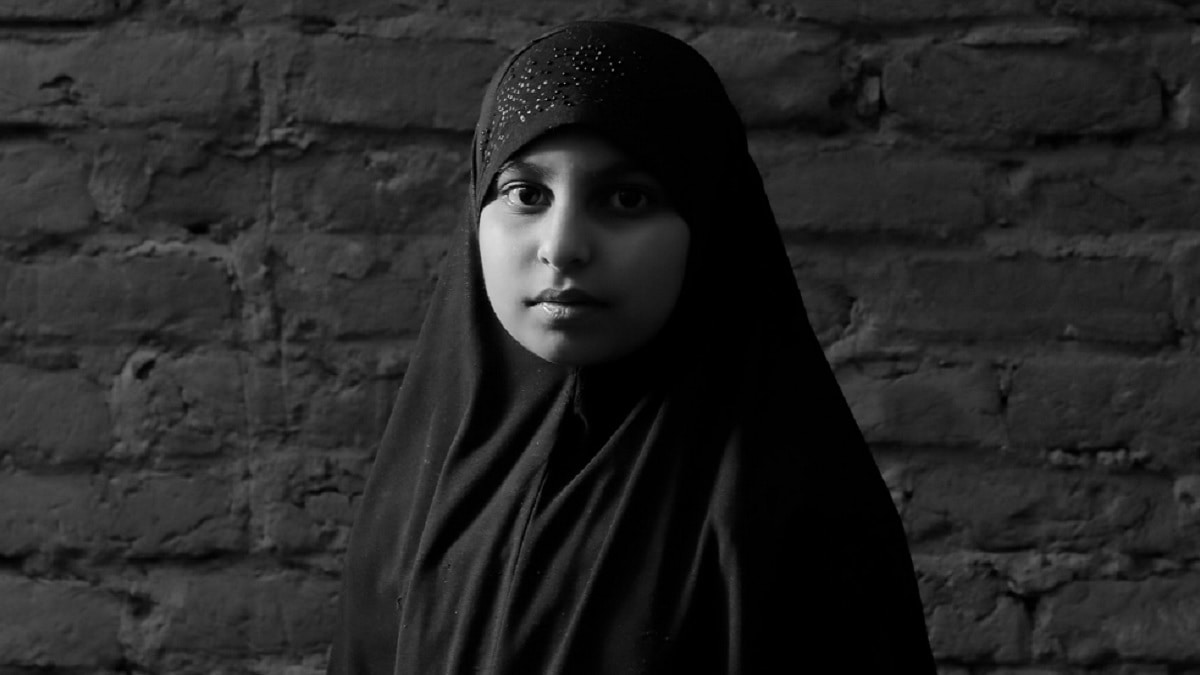Newsletter | Kayo Kayo Colour: A Muslim Family In Gujarat Is Framed In Black & White
Shahrukhkhan Chavada's Kayo Kayo Colour? (or Which Colour?) premiered at the International Film Festival Rotterdam earlier this month. Aditya Shrikrishna reviews.
Feb 23, 2023

This column was originally published as part of our newsletter The Daily Show on February 23, 2023. Subscribe here. (We're awesome about not spamming your inbox!)
***
IN SHAHRUKHKHAN CHAVADA'S Kayo Kayo Colour? or Which Colour? the frame is often trisected to give us three parts of equal intrigue. The camera is fixed but when a mother and daughter are sitting on a bed folding clothes and chatting, a mirror on the right not only presents faces opposite each other but also reflects their differing opinions on a topical issue in the family. It’s about Razzak (Imtiyaz Shaikh; one among the full cast of non-professional actors), one’s son and the other’s brother. With a wife and two children — Ruba and Faiz — in Kalupur in Ahmedabad, Razzak has left his job and is looking to buy an auto rickshaw, an idea that doesn’t enthuse his wife. The sister married up, or she has climbed the social ladder in the last decade. She made it out of Kalupur and is in a more upper-class neighbourhood with proper roads where children play outside, remain safe, and a woman drives a Honda City. Raba’s cousin has fancier toys, and for the elderly grandmother there is a decked-up swing with a view.
Life in Kalupur is the opposite. Chavada, who is also the cinematographer, offers a top angle shot again divided into three distinct parts. To the left are two pairs of hands belonging to young girls whose favourite game is to pretend to do kitchen chores with miniature household items. And to the right is a free for all dump yard where young boys chase and catch the roosters. In between is a narrow stone pathway with women in burqas returning from a grocery run with a child holding one hand, and a man walking aimlessly. With this fringe-of-the-action framing and non-professionals, Chavada’s film has a Bressonian influence as well as the realist approach of a Kiarostami in his capture of everyday familial life in Kalupur. The structure of the family and the roles of its members in the ghetto and in the more upmarket neighbourhood remain the same, but the quality of life is vastly different. There is nothing offhand or throwaway in Which Colour? for everyday banalities and concerns compose the crux of the film. So, in those seemingly average moments too, the film defines strict gender roles the families follow but refrains from making a statement, one of the film’s several successes. And Chavada does all this in a compact 4:3 aspect ratio for more than three quarters of the film.
A HARD DAY'S NIGHT
SHOT IN BLACK-AND-WHITE Which Colour? is a remarkable economic framing of the Muslim family in Gujarat, one that is trying to find its footing long after displacement post-2002 and just to give a peek into an alternate world, another that is relatively and maybe only economically secure. Chavada’s focus is on the former through the eyes of Ruba (Yushra Shaikh) and to a minor extent Faiz (Fahim Shaikh). It’s also economical and truly independent behind the camera, a small team working with Chavada, made up of Wafa Refai (producer, co-editor and sync sound recordist), Sanchay Bose (editor), Bigyna Dahal (sound design) and Fahad Zuberi (music direction). As if to suggest constant rebuilding, Chavada offers closeups of unpainted bricks, some broken and some in ruins to suggest that a minority community in India is in a state of flux forever. With that boxed in aspect ratio, Chavada uses blocking of his actors and objects along the vertical axis. We are forced to peek deeper into the frame rather than sideways — when Faiz and Ruba are getting ready in the morning sitting next to each other, the children running up and down playing a game, when the grandmother prepares for the morning at the farther end once Ruba and her grandfather have gone to sleep, or when Ruba’s mother and the neighbour discuss the cost of living and options to earn a little extra even as their respective daughters walk in and out and across. There are effective uses of jump cuts (and windows and mirrors) that condense time and distance in a neighbourhood that’s too small to hold this many people even if the outside world remains inaccessible.
Sometimes the ashes of a past haunt the present in innovative ways. Razzak’s sister is trying to persuade her mother to understand that Razzak staying put in Kalupur will do him no good. She offers the example of their father who had a popsicle (gola) cart which prospered in Naroda but sank almost immediately after the displacement. The next scene has Razzak sitting inside a stationary rickshaw speaking to a friend about borrowing money for a similar vehicle and next to him lies a cart turned over, unused but touched by time. While Chavada uses movement and blocking effectively in this film, he also uses voices just as effectively during a power cut that blacks out the screen. We return to the more traditional 16:9 when the power is restored only to discover that there’s a major news item that has rocked the country. We don’t know it yet, but Chavada has already teased it in an earlier conversation about daily expenses. And when we finally learn what it is the gaze switches, a turn so powerful that it reveals the guilty all too clearly.
Share